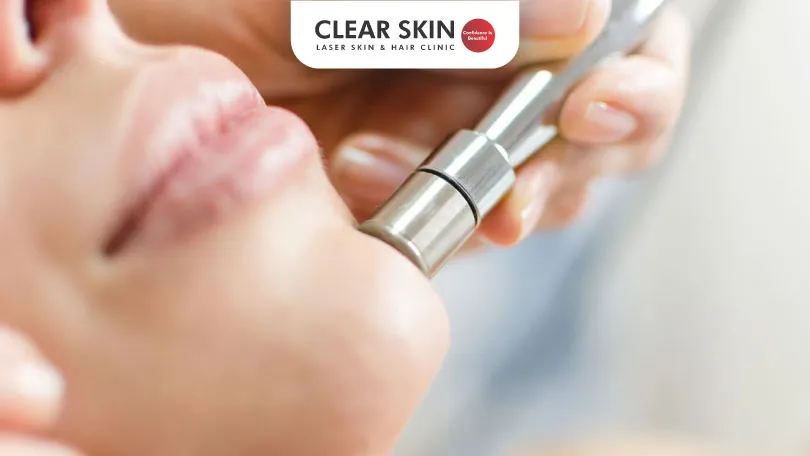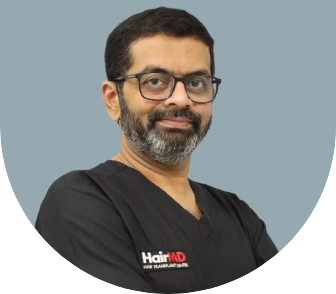Does Microdermabrasion Works for Sun Damaged Skin?
Reviewed By: Dr Dhananjay Chavan
Updated on: 14th September, 2023

You could be in your late twenties, just returned from a vacation at the beach, with sunburn as a memento or someone in their 40s and 50s who’s never paid attention to sun protection. Sun damage is a reality you’ll have to contend with.
But you can rest your anxiety and fears. Due to innovations in treatment modalities, it is possible to erase the sun damage to your skin, and give yourself spotless, smoother and younger–looking skin!
Before telling you how to erase sun damage let us quickly get to know the enemy better.
Table Of Content
- What is Sun Damage or Sunburn?
- Sun Damage: Microdermabrasion Treatment
- What Exactly Goes Into It?
- Microdermabrasion: Best Tan Removal Option?
- At Home vs Clinic
- How do I Prepare for Treatment?
- When is Microdermabrasion Not a Good Idea?
- How Effective Is It?
- Side Effects of Microdermabrasion
- What Else Can I Opt For?
- Why Clear Skin?
- Conclusion
What is Sun Damage or Sunburn?
Sunburn is nothing but an acute inflammation of the skin due to excessive exposure to ultraviolet (UV) radiation. It starts off by reddening of the skin, seen usually after just 3-4 hours of exposure, and reaching a peak at 12-24 hours. In addition to redness, the skin will also be warm to touch, painful, tender, itchy; because it’s inflamed, it may also appear swollen or demonstrate small fluid-filled blisters.
In severe degrees of sunburn, you are at a greater risk of dehydration and infections and may develop a headache, fever, chills, nausea, and fatigue. Healing occurs within 4-7 days by way of peeling. The sunspots, on the other hand, are a result of cumulative sun exposure over years, due to increased melanin.
Sun damage can happen to any area exposed to the sun, including earlobes, scalp, lips, and eyes. The best way to prevent it is to stay covered up, wearing scarves or wide-brimmed hats, to stay hydrated, and to always wear sunscreen (SPF>30).
But if the damage has been done, here’s how you can treat it, and reverse the damage done to your skin.
Sun Damage: Microdermabrasion Treatment
Microdermabrasion is a procedure in which a special machine applies a slightly rough applicator tip to the surface of the skin of the face or neck. Hence, this removes the topmost layer of the skin. As a result, this allows the repair of damaged skin and renewal of skin tone and texture. Microdermabrasion can improve the appearance of:
- Sunspots
- Age spots
- Fine lines and wrinkles
- Acne scars
- Melasma
- Hyperpigmentation
It works on all skin types. It solves skin problems without causing any skin color changes or scarring. In the procedure tiny crystals are sprayed onto the skin and the applicator is rubbed against it to remove the skin layer. It helps in skin exfoliation and skin rejuvenation to get healthy-looking skin.
If you’re considering microdermabrasion, your dermatologist will review your medical history. In fact, he will even conduct an examination to ensure you are a good candidate for it. Accordingly, the dermatologist will also discuss your expectations, optimum outcomes and potential risks of the procedure as well as post-treatment skincare routine.
What Exactly Goes Into It?
First, the doctor uses a deep cleaning gel or foam to remove any makeup, dust or natural oils from your skin. A device is then applied to your face to abrade the uppermost layer of skin, i.e. rubbing it away via friction. A moisturizer is applied later. The procedure takes about 30-40 minutes.
Microdermabrasion: Best Tan Removal Option?
Microdermabrasion is a non-invasive, tan skin removal process that involves manual exfoliation of the top layer of the epidermis. The removal of the tanned or sun-damaged skin, the epidermal layer gives way to new, healthy-looking skin. However, this de-tanning method should not be performed if the patient has been administered tretinoin in the past six months or anti-inflammatory medication in the past week. Suited to any skin type and completely painless, this procedure is deemed to be the best way to remove tanning from the face as it increases new cell formation, reduces scarring and smoothes your facial skin as well.
Microdermabrasion is one of the best tanning removal options, it can benefit your skin the most especially if you’re trying to maintain the natural facial skin texture by removing the sun-damaged layers. The right implementation of this procedure can help remove tan and dead skin cells from your body.
At Home vs Clinic
Yes, microdermabrasion kits are available for you to use at home. Even though promoted as safe and effective, the fact is that home microdermabrasion will never match the professional treatment. Because the professional treatments use pure crystal flows by way of vacuum effect as opposed to crystal-based cream that is part of the at-home kits, they leave no residue to trigger adverse reactions, give better and longer-lasting results, and also stimulate collagen remodelling.
You call the shots.
Microdermabrasion is performed by plastic surgeons, dermatologists and also in spas and salons. So choose wisely where and with whom you want to get it done. It’s best to go through a referral. Get a proper consultation, which includes an examination of your skin and accordingly the number of treatments needed, the safety of the procedure and the possible side effects, the results that can be expected, the cost, and whether microdermabrasion is the best treatment plan for you. Equip yourself to make the decision.
How do I Prepare for Treatment?
Stay out of the sun, sacrifice your smoking habit in exchange for smoother looking skin, and clean your face with a cleanser before your appointment.
Post the procedure
Cleanse your face and apply moisturizer once it dries. Use moisturizer and sunscreen religiously over the next few days, and avoid sun exposure as much as possible. You can start using makeup after a couple of days. Microdermabrasion creams containing vitamins A, C and E help give the skin a fresh and toned look. Avoid using exfoliation products, chemical peels and waxing for a few days.
When is Microdermabrasion Not a Good Idea?
If you’ve been taking tretinoin for acne in the past 6 months, or anti-inflammatory medication (NSAIDS) in the past one week; if you suffer from eczema, warts, psoriasis, lupus, or have had a sudden breakout of acne, boil or rash, it’s best if you postpone the treatment till the condition is resolved. Also at least until a week before, avoid waxing, facials, chemical peels, laser and other treatments and leave your skin feeling more sensitive.
How Effective Is It?
Very! Because not much preparation is needed, you can fit it conveniently as your schedule allows, as there is almost no downtime required. Walk in and walk out with results instantly noticeable, in terms of tone, texture and other signs of ageing. It can be comfortably used on any skin type since it is completely painless. Also, because it removes the dead skin cells, it permits your high-tech skincare products to penetrate better and work effectively. All of this is possible just after a single session! Multiple sessions enable you to have:
- Clean pores. Say goodbye to clogged up pores!
- New skin cells. Healthy, new cells give your skin a younger look.
- Smoother skin. Blemishes and fine lines fade over repeated treatments.
- Reduced scarring. Removes the dead skin cells that form your scar, replacing it with new ones.
Side Effects of Microdermabrasion
Any discomfort experienced as part of microdermabrasion is short-lived. This includes redness and swelling, bruising, flaky, dry skin, slight skin tightness and sensitivity, small abrasions and areas of hyperpigmentation. But because microdermabrasion acts only on the outermost layer of skin, the potential drawbacks are very limited and temporary. Microdermabrasion is otherwise a painless and non-invasive procedure that results in smoother, clearer skin.
Too good to be true?
Not at all! Mainly because it makes no tall claims. Neither does it masquerade under the guise of a single treatment session as a cure, nor does it claim to treat severe damage, involving the deeper layers of skin. So it legitimately boasts of being the ideal treatment for people with minor skin imperfections, a quick procedure with minimal care measures to be taken before or after, minus the baggage of risks that come with other procedures, and bequests you with younger looking skin!
What Else Can I Opt For?
- To start with, you can use topical skin damage repair creams and gels containing retinoids, vitamins C, E, and other antioxidants. They increase collagen, lighten spots and slow down the signs of ageing.
- Exfoliation in the form of alpha and beta hydroxy acids can be done to stimulate faster skin cell turnover.
- Chemical peels, whether superficial, medium or deep can be performed as indicated. They require a longer recovery time.
- When the sun damage involves deeper layers of skin, microdermabrasion isn’t of much use. Big guns have to be called in!
It’s always advisable to get your skin examined by a dermatologist to understand what is right for your skin type. These treatments may not work equally well for everyone. A dermatologist can provide the right treatment methodology or combination of treatments that will provide the best results for you unique skin concerns.
Why Clear Skin?
We can help you repair damaged skin tone through evidence-based treatment methods like microdermabrasion treatment that are transparent about the expected results to ensure customer satisfaction. We pride ourselves in giving patients great care and guidance during the pre and post-op stages, instead of treating it as a one-time session.
We practice the safest, quickest and most effective procedures for treating skin pigmentation and tan removal, ensuring a relatively painless experience.
Do You Know?
Roughly 250 Patients Are Treated
Everyday By These Dermatologists
(You are one click away from flawless skin)
Meet Our Dermatologist!
Conclusion
In conclusion, microdermabrasion is a highly effective and minimally invasive treatment for sun-damaged skin. It works by exfoliating the top layer of the skin, promoting the growth of new, healthy skin cells and improving the overall texture and appearance of the skin. Whether you are dealing with sunspots, fine lines, or uneven skin tone, this procedure can help rejuvenate your skin, leaving it smoother and more radiant.
However, it’s essential to consult with a dermatologist to ensure it’s the right treatment for your skin type and condition. If you’re looking to reverse sun damage and achieve youthful, glowing skin, consider microdermabrasion as a reliable option.
Further Reading
How to Avoid Acne in Monsoons?
Avoid acne in monsoons with a gentle skincare routine, diet tips, and hydration. Get expert advice to manage breakouts and keep your skin clear and healthy.
Does Makeup Cause Acne-Prone Skin?
Worried about breakouts from using makeup? Does makeup cause acne for you? Learn the safe ways to apply makeup for acne-prone skin.
Morning Skin Care Routine for Glowing Skin
Clear Skin Clinic, led by top dermatologists, shares the ideal morning skincare routine to help you achieve a radiant complexion naturally and effectively.
Monsoon Skin Care Tips for Radiant, Healthy Skin
Clear Skin Clinic, led by top dermatologists, shares the ideal morning skincare routine to help you achieve a radiant complexion naturally and effectively.
Have thoughts? Please let us know
We are committed not only to treating you, but also educating you.





